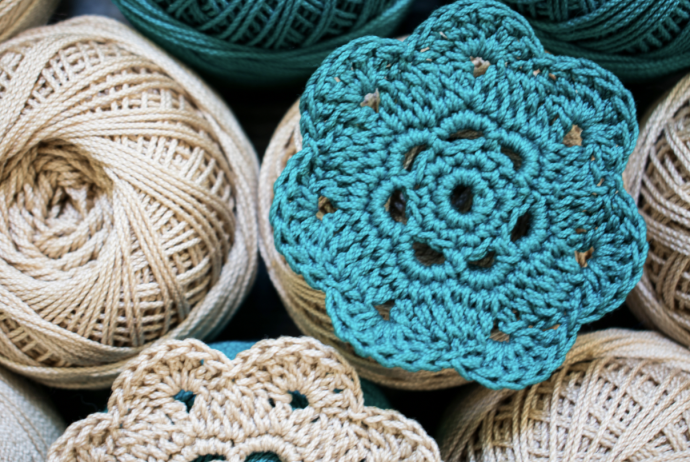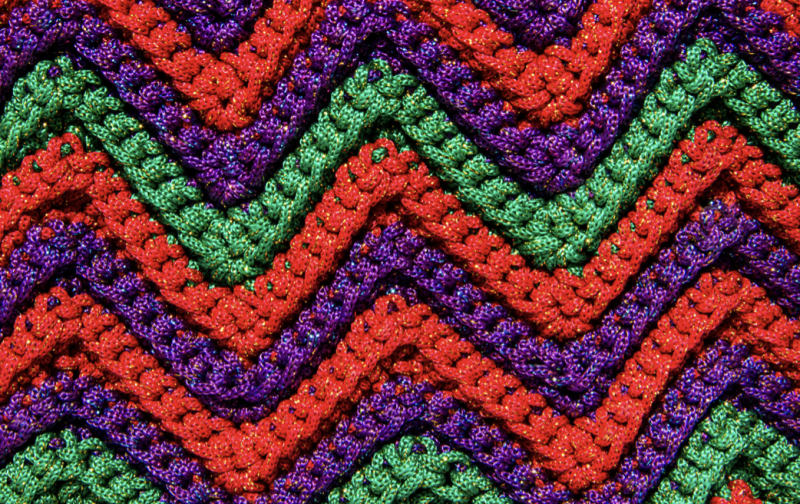8 Most Common Crochet Mistakes and How to Fix Them

Let's face it, we all make mistakes. No matter how long we've been crocheting, mistakes happen. Sometimes we ignore our mistakes and just call them "personalization." Other times, the mistake is obvious and we have no choice but to fix it and start over. Today I thought it would be a good idea to discuss the 8 most common crochet mistakes and how to avoid them.

1. Not working up a gauge swatch.
Gauge refers to how many stitches and rows make up a 4 by 4 inch swatch of crochet fabric. The designer includes gauge so that your project will be the correct size. I know I’d hate to put hours and hours into a project only to finish it and find it is way too small or way too large.
Let’s say your pattern calls for a medium weight yarn and a size I/9 hook. In the examples below you can see, there are 8 rows in 4 inches of fabric and 12 single crochet stitches across 4 inches. Compare these numbers with the gauge on the pattern. If they are very close or match, you’re good to go. If not, you’ll either need to adjust your tension or use a different size hook. Granted some projects don’t rely on gauge, but if you’re making garments gauge is crucial.
2. Using the wrong weight and type of yarn.
Like gauge, the weight and type of yarn you use are important. Using a different weight yarn can greatly affect the size of the finished project. Let’s say you want to make a sweater for an adult and the pattern calls for a medium weight yarn, but all you have is a big bulky yarn. Sure you can work up the sweater, but it will be way too big. The same thing works in reverse. Using too fine of yarn will reduce the finish product’s size. You can substitute yarn as long as it is the same weight.
3. The sides of your project grow or shrink.
This is very common mistake beginners make. The keys to having nice even edges are to know where to work the first stitch of each row, where to work your last stitch, and how many chain stitches to work at the beginning of each row.
4. Insert the hook into the first stitch, not at the base of the chain stitches.
Here are the guidelines for beginning each row:
Single crochet – 1 chain stitch
Half double crochet – 2 chain stitches
Double crochet – 3 chain stitches
Treble or triple crochet – 5 chain stitches
Work the last stitch into the top chain stitch of the previous row. Also get into the habit of counting your stitches across a row. By starting and stopping at the correct places as well as counting stitches you’ll end up with nice even sides every time.
5. Crocheting too tightly or too loosely or varying the tension.
It is important to keep your tension constant. One way to do this is to take your time. Speed will come later, right now concentrate on making nice even stitches. If you crochet too tightly you’ll have a hard time working the next row because you’ll be fighting with the hook trying to insert it into the stitches. If you crochet too loosely your gauge will be off and your work will look sloppy. If your tension varies a lot your entire project will be uneven and wonky.
6. Not crocheting under both loops.
If you look at a crochet stitch you will see the two loops on top where you insert your hook form a sideways “V”. These loops are where you insert the hook. Many beginners only insert the hook into the front loop, not both loops. Unless the pattern specifies back or front loop, always use both loops.
7. Tackling patterns way above your skill level.
It is fun to challenge yourself and try out patterns a bit above your skill level. But if you are a beginner and try to tackle an advanced pattern you’ll only frustrate yourself. Crochet, like all skills, takes time to master. Give yourself time to learn and practice. Work beginner and basic patterns first. You’ll be doing intermediate and advanced patterns in due time, but for now take your time and enjoy learning and practicing.
8. Not reading the pattern before you begin.
Sure, a new pattern is exciting and I’m sure you’re just itching to begin. But stop. Take the time to read over the pattern so you understand the terms and instructions. Check out the Notes section to see if the designer gives you any tips on how to work the pattern and if there are any special stitches. If you run into any stitches or techniques you’re not familiar with, and there are no instructions about them in the pattern, look on YouTube for tutorials and practice before you begin the pattern. If you read and familiarize yourself with the pattern before you begin it will be much easier to work the project and not get frustrated.
